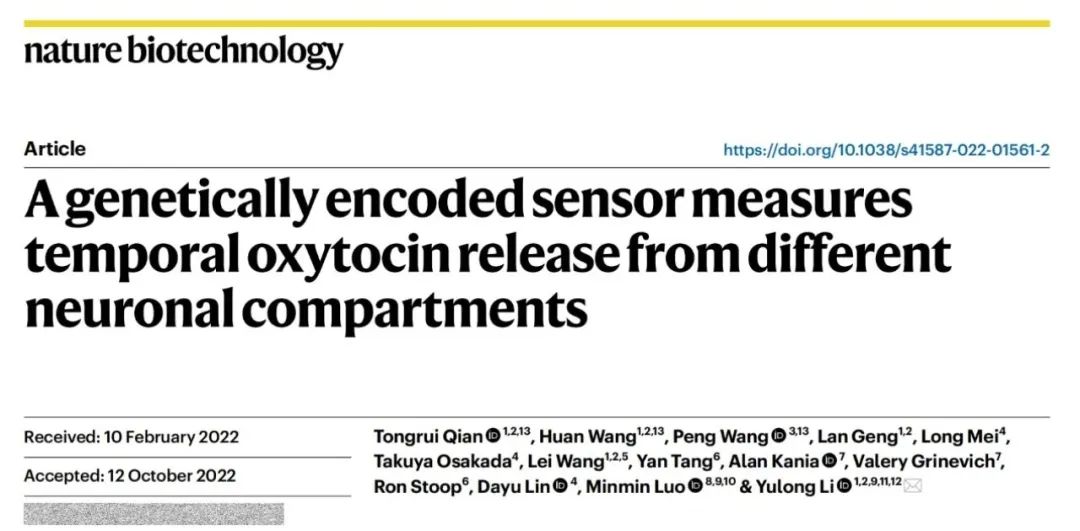Prof. Yulong Li: A genetically encoded sensor measures temporal oxytocin release from different neuronal compartments

Abstract
Oxytocin (OT), a peptide hormone and neuromodulator, is involved in diverse physiological and pathophysiological processes in the central nervous system and the periphery. However, the regulation and functional sequences of spatial OT release in the brain remain poorly understood. We describe a genetically encoded G-protein-coupled receptor activation-based (GRAB) OT sensor called GRABOT1.0. In contrast to previous methods, GRABOT1.0 enables imaging of OT release ex vivo and in vivo with suitable sensitivity, specificity and spatiotemporal resolution. Using this sensor, we visualize stimulation-induced OT release from specific neuronal compartments in mouse brain slices and discover that N-type calcium channels predominantly mediate axonal OT release, whereas L-type calcium channels mediate somatodendritic OT release. We identify differences in the fusion machinery of OT release for axon terminals versus somata and dendrites. Finally, we measure OT dynamics in various brain regions in mice during male courtship behavior. Thus, GRABOT1.0 provides insights into the role of compartmental OT release in physiological and behavioral functions.
Original link:https://www.nature.com/articles/s41587-022-01561-2